Tortuguero: Life-Changing Moments
You have to get to Tortuguero by water. The town sits on Costa Rica’s Atlantic coast, surrounded by the ocean on one side and rainforest on the other. There are no cars, no roads—we arrived via the rivers and canals that wind through the forest, using the waterways like a highway system, passing crocodiles on the beaches and monkeys in the branches overhead.
The monkeys wake you up at dawn, rudely howling over your roof to one another. When they’re quiet, though, you can hear the racket of birds and insects and wind and waves. You aren’t something separate from nature in Costa Rica. Your conversations, music, and motors aren’t ever loud enough to drown out the forest—humans simply add to the rhythm.
It’s not hard to understand how the village draws so many visitors each year: the forest is awe-inspiring; the weather is perfect; the beaches are beautiful.
Once you accept that, it’s easy to get along with the inescapable wildlife. For example, my roommates and I had a lizard friend that liked to shower with us, and sometimes there were cockroaches joining us, too. We named the lizard Tom, keeping a wary eye on him while we washed our hair in the cold water—we ignored the cockroaches, and they ignored us.
Tortuguero translates to “the Land of Turtles” in Spanish, and the city wasn’t named for nothing. Thousands of sea turtles lay their eggs on the beaches of Tortuguero every year, the sands hosting the nests of at least four different species. The town’s economy used to hinge on the turtle-hunting trade. Green sea turtles were in demand for their meat, oil and shells, joining logged wood as an important part of the village’s trans-ocean, regional, and local trade. As canals were built and the village became easier to access, the turtles and the forest eventually became protected, and the ticos now rely on something else for their livelihood—ecotourism.
Just as the beaches of Tortuguero are important in the revival of the endangered green sea turtle, the turtles are a vital part of the Tortuguero economy, bringing in tens of thousands of tourists and conservationists each year. Fortunately for the local ticos, turtles are far more valuable alive than dead at the hands of traders.
Tortuguero: Life-Changing Moments
It’s not hard to understand how the village draws so many visitors each year: the forest is awe-inspiring; the weather is perfect; the beaches are beautiful. I’d say the water was lovely, but I wouldn’t know. A high density of sharks off the coast kept us out of the ocean during our visit.
Humans and sharks aren’t the only animal threat to sea turtles. There are plenty of predators waiting for the annual windfall. It’s estimated that only 1,000 of every 10,000 hatchlings survive to adulthood—just 10 percent.
We stared in disbelief—touch a turtle while she laid her eggs? I put out my hand to stroke one smooth flipper, watching the eggs fall into the sand beneath the ancient species.
One night, we crept down to the beach with a conservancy tour guide, prowling through the dark forest for over a mile to get to the sand where the turtles were laying their eggs.
“Stay close and stay quiet,” the guide told us. We continually swiveled our heads around to check that nobody in our group had been ambushed by the native big cat—the jaguar. Of course, nobody had. We never saw one our entire trip.
As we got to the beach, our guide directed us to gather near a turtle digging her nest, leathery flippers pushing sand around to make way for her eggs. I never imagined I’d get that close to a nesting sea turtle—and then our guide beckoned us closer. The turtle was still ignoring us—concentrating.
“She’s in a trance, now. She won’t move until she’s finished laying her eggs—not even if she’s attacked,” our guide whispered. “You can touch her now.”
We stared in disbelief—touch a turtle while she laid her eggs? I put out my hand to stroke one smooth flipper, watching the eggs fall into the sand beneath the ancient species.
It was difficult to comprehend how few of those baby turtles would make it even to one year.
“It’s hard, but we can’t help the baby turtles get to the water. They have to be strong enough,” explained our guide.
I never imagined I’d get that close to a nesting sea turtle—and then our guide beckoned us closer.
I couldn’t imagine watching thousands of hatchlings massacred on the open beaches each August. The best hope these guides had was to educate groups like ours to ensure the turtles had a nesting place that was at least free of human threat. Unfortunately, it’s no longer just the beaches we’re threatening.
Rates of accidental capture, injury and mortality in commercial fishing operations are high. Plastic trash can make turtles sick, entangle them or starve them to death if mistaken as food. Pollution from oil spills and chemical runoff are poisonous to turtles and the food they eat. Rising sea levels and severe storms eradicate beaches, and warmer water temperatures affect the balance of sexual diversity in sea turtle populations.
One visit to the village of Tortuguero rooted in me a deep-seated appreciation for the balance of nature. It’s amazing how one tiny spot on the planet can make such a difference. Costa Rica boasts the most biodiversity on Earth, and I am grateful to have learned so much by being part of it for a short while. Be sure to check out how you can get involved with the Sea Turtle Conservancy or other organizations working to support the sea turtles and other wildlife populations—and, while you’re there, take a deep breath of that beachy, rainforest air for me.
Breathe in, connect, and breathe out.
Pura vida.



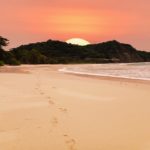
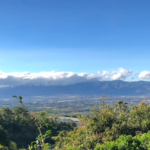

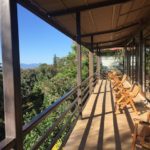
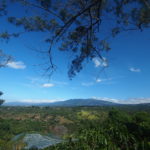
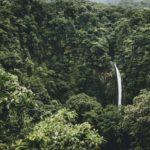
One thought on “Tortuguero: Life-Changing Moments”